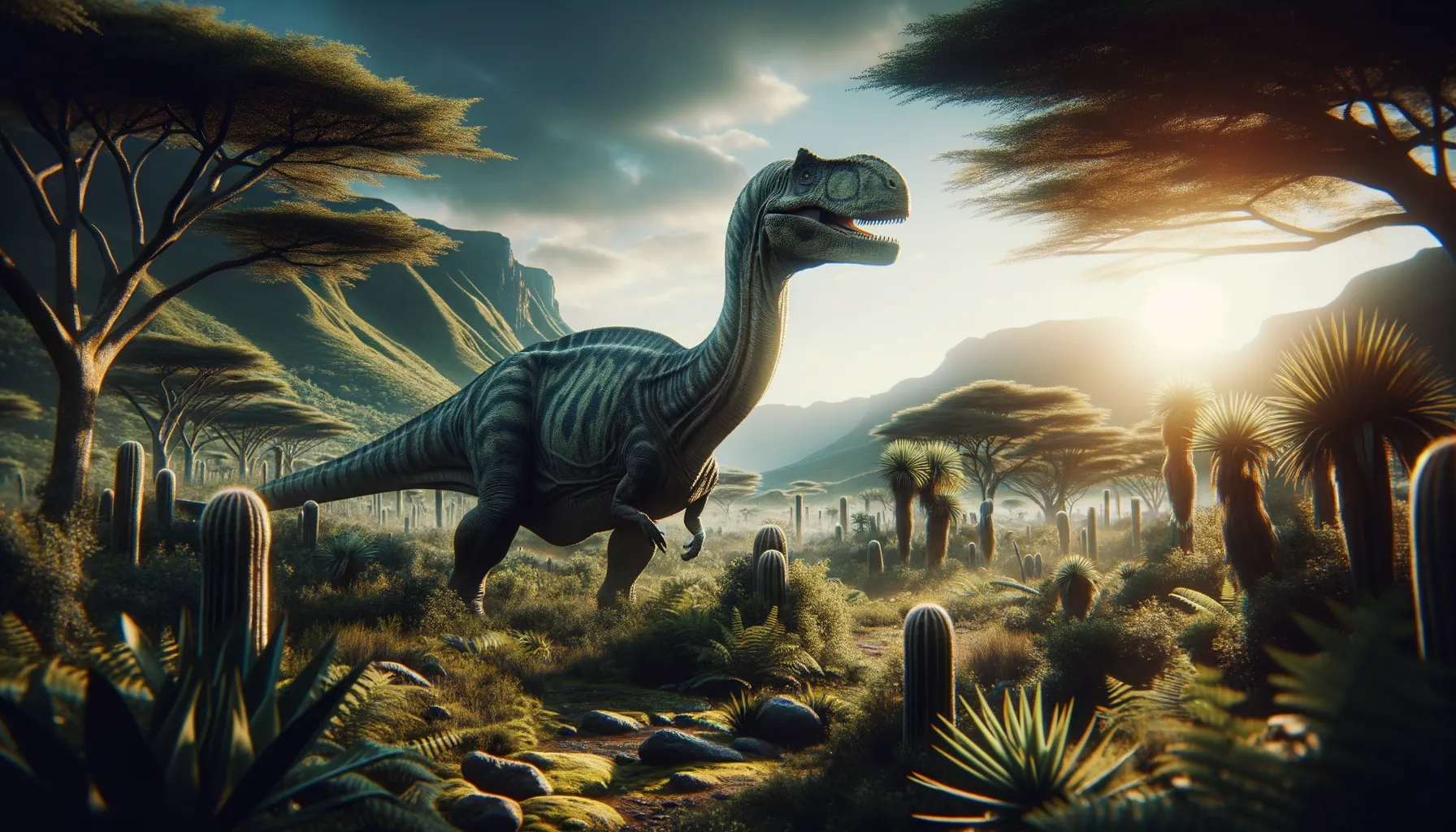
Algoasaurus
Majestic giant of the Jurassic era.
Period
Jurassic
Length
About 9 meters long.
Height
Around 6 meters tall.
Weight
Approximately 22 to 30 tons.
Algoasaurus was a large herbivorous dinosaur that roamed the land during the late Jurassic period. Known for its immense size and long neck, this dinosaur primarily lived in what is now South Africa. Paleontologists believe Algoasaurus was closely related to other sauropods. Its discovery added valuable information to the understanding of the diverse dinosaur ecosystems that existed in the Jurassic era.
Diet
Algoasaurus was a herbivore, primarily feeding on lush vegetation. Its long neck allowed it to reach high branches and leaves that were unavailable to smaller species. It is likely that it consumed a large quantity of plants to sustain its massive size.
Hunting
Being a herbivore, Algoasaurus did not hunt other animals. Instead, it constantly scouted for the best places with an abundance of vegetation. Its primary survival strategy revolved around avoiding predators through sheer size and defensive group behaviors.
Environmental challenges
During the Jurassic period, Algoasaurus faced challenges such as variable climate conditions and competition for food resources with other large herbivores. Predators also posed a threat, though its large size offered some protection. Seasonal changes in vegetation would have influenced migration patterns, making access to food a crucial challenge.
Speed
Relatively slow-moving due to its large size.
Lifespan
Estimated around 70 to 80 years in the wild.
First discovery
Discovered in the 19th century in South Africa.
Fun Facts
- Algoasaurus was discovered in South Africa, named after the Algoa Bay where its fossils were found.
- It is one of the lesser-known dinosaurs, partly because its fossil remains are quite limited.
- Algoasaurus lived during the Late Jurassic period, roughly 150 million years ago.
- This dinosaur was a herbivore, which means it fed on plants and vegetation.
- Despite its size, Algoasaurus was likely a gentle giant, roaming the ancient landscapes with ease.
- Algoasaurus is part of the sauropod group, making it a distant relative of the famous Brachiosaurus.
- The name 'Algoasaurus' means 'Algoa lizard', reflecting its place of discovery.
Growth and Development
Algoasaurus hatchlings were considerably smaller than adults, requiring rapid growth in their early years to avoid predation. Growth rates were possibly quite high, enabling them to quickly reach a size where they could defend themselves. The development of strong limbs and a sturdy skeletal structure was vital for supporting their massive bodies.
Habitat
Algoasaurus lived in prehistoric floodplains with an abundance of vegetation and water resources. The warm, humid climate helped sustain the lush plant life crucial for its diet. Its habitat was shared with other dinosaur species, both herbivores and carnivores, creating a dynamic ecosystem.
Interaction with other species
Algoasaurus likely interacted with other sauropods as well as predatory dinosaurs. While its sizeable stature provided protection, young or sick individuals were vulnerable to attacks. Cooperation within herds could help protect against predators, and its interactions would have been shaped by competition for resources.
Natural lifespan
Algoasaurus could live around 70 to 80 years in its natural habitat.
Reproduction
As a sauropod, Algoasaurus reproduced by laying eggs, typically in carefully selected nesting sites that offered some protection from predators. The nesting habits were probably communal, providing enhanced safety through numbers. The eggs were incubated by sunlight or vegetation warmth, and hatchlings required immediate access to food sources.
Social behaviour
Algoasaurus may have exhibited social behaviors typical of large herbivores, such as moving in herds for protection against predators. Herd living allowed for collaborative defense strategies, especially for safeguarding the young. Social interactions could have played a role in finding food and navigating the prehistoric landscape effectively.
Fossil locations
Fossils of Algoasaurus have been predominantly found in South Africa. These discoveries provide a glimpse into its habitat and the ecological conditions of its time. The findings have been crucial for understanding the diversity of late Jurassic sauropods in the southern hemisphere.
